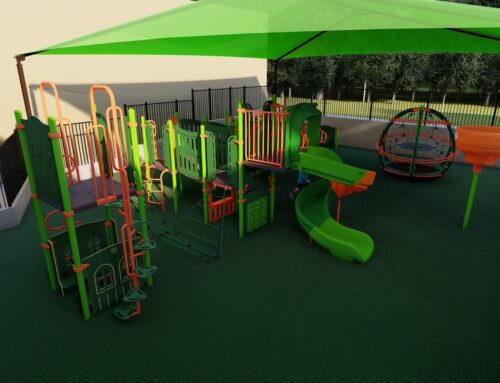With laser-like concentration, sixth-grader Catherine Patrick drags the Kramer math competition results column to the left side of her PageMaker screen. But the text block acts skittish, and the copy lands raggedly overlapping a small item by Antwoinette De’Grave, which recounts in free form prose: “For some of you that don’t know we have a new teacher Mrs. Pasierb.” Finally, however, with a bit of effort, Catherine’s text drops into place, her tabulated results scrolling neatly down the page.
Two afternoons a week at Kramer Elementary School, elementary students, fortified by Goldfish and milk, write, compose and edit in the school’s computer lab. Keyboards emit a rhythmical “tap, tap, tap” as the editor-in-chief, four editors and writers work on the latest edition.
The students, led by faculty sponsors, produce four issues of their school newspaper, FYI Kramer, per year. An op-ed section, news, sports and entertainment sections fill the pages, and each boasts its own editor. For the past seven years, students and faculty advisers have produced an increasingly sophisticated flurry of school news, student contributions and opinions.
The school paper, however, is not exactly a new concept. Given that schools are generally a mish-mash of teachers, students, events, achievements and sports (i.e., a little community), a news vehicle of some kind might seem appropriate. Add to that elementary-age kids’ historical adeptness at asking, the age-old reporter’s question “Why?” (typically followed a few minutes later by, “Why-why-why?”) it might even seem like a given after-school activity.
But FYI Kramer is not just another addition to karate, finger-painting and baseball. The 20-page, quarterly publication has landed such scoops as an account of then-Gov. George W. Bush’s 1997 visit and a 2001 interview with former Mayor Ron Kirk. Also in 2001, current editor-in-chief Jeff Wilke covered Bizarro cartoon strip creator Dan Piraro’s visit to the school.
Given all this, a regularly produced newspaper at this elementary school isn’t just another “cute” concept. Second-graders who find a newsroom niche end up working on the paper throughout elementary school, and continue on to cover stories as sixth-graders or graduate to an editing position.
“Kids’ natural skills tend to evolve at the paper,” says Leslie Pinkham, a long-time faculty sponsor and computer teacher who recently turned over the reins to writing specialist Margo Hayden and counselor Keri Bentrup. “Some just have a natural aptitude from the beginning for writing or maybe manipulating text. It just clicks for them.”
The paper has the dual role of teaching kids computer skills and producing a readable news tool.
“One thing that we’re proud of is that our kids learn on industry-standard software,” says Principal Kyle Richardson. “We don’t use a lot of children’s playtime software to develop this newspaper.”
The students also take on the role of photojournalists, via digital camera. No boring mug shots here: Lauren Robinowitz, a fourth-grader at the time of Kirk’s visit, took an action shot of him in mid-interview.
The fact that the children approach their news-related tasks with a curious, experimental sensibility actually makes for a unique newspaper production.
“Adults can be rigidly time-efficient,” Pinkham says. “Kids will get halfway through something, and then change their minds about what they’re going to do. Suddenly, they’ll say, ‘Wouldn’t it be cool to do this instead?’ They end up being more innovative, willing to try different things. It’s not a big deal to them.”
Hillcrest High School is just up the road and known as the feeder high school for the area. It is also renowned for its nationally ranked journalism program. In fact, a few Dallas Observer and D magazine writers are Hillcrest graduates. Fourth-grader Valirie Morgan may one day be one of those Hillcrest journalism standouts.
“When you look at her writing, you’re just blown away,” Richardson says. “She’s just a great writer.” Possibly a hard-hitting reporter too: As a second-grader in 2001, Valirie, with pencil and notebook in hand, was the one to interview Kirk when he attended a “Donuts for Dad” event at the school. One of her questions? “How can Dallas schools get more parents involved?”
It appears that the other students are also on track to mastering the skill of asking hard-hitting questions: Lindsey Mehmeti’s piece in the Spring 2002 issue on the TAAS test went straight for the jugular: “Should teachers get paid if their class passes the test?”
The future for FYI Kramer and its writers appears exciting. Wilke summed it up best with this quote from the end-of-year 2002 issue: “FYI Kramer is just going to keep getting better and better, so you won’t want to miss a single issue!”





